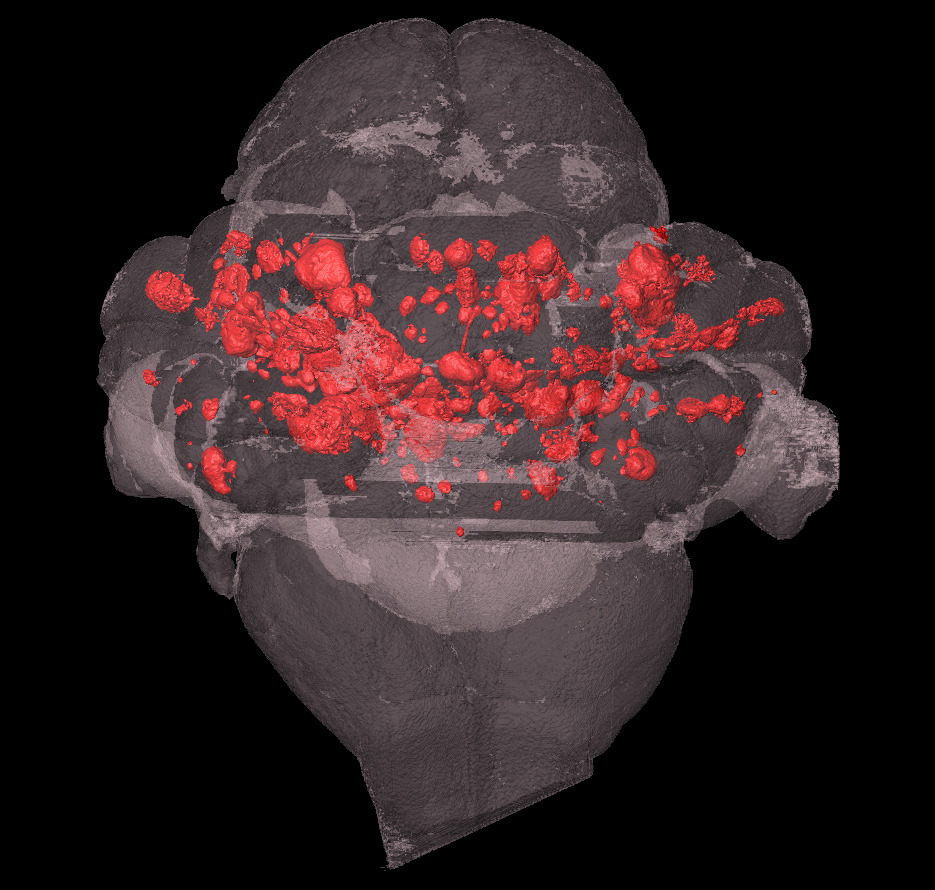Other symptoms include headaches, hearing, vision or cognitive problems, weakness and paralysis. Up to 0.5% of population is affected by CCM and current method of treatment is surgical removal, if their location in the brain permits. No drug treatments are available but researchers have recently identified the molecular mechanisms that cause CCM, which is the first step in developing a drug treatment.
Dr. Xiangjian Zheng at the University of Sydney and Prof. Mark Kahn, University of Pennsylvania, have led a team of researchers to investigate causal molecular pathways for CCM. They identified three critical signaling molecules that work together. When any one of them is faulty the disease occurs. The team then generated mouse models of the disease to identify how other molecules interact with the faulty signaling pathway. This could identify potential drug targets.

Rendering of identified lesions (red) within a mouse brain
Human patients with clinical symptoms of CCM can be relatively easily diagnosed by magnetic resonance imaging (MRI). Mice are too small for MRI, so the researchers chose X-ray microtomography in the AMMRF (now Microscopy Australia) at the University of Sydney to efficiently and quantitatively measure CCM lesions in their mouse models.
Drugs that target the causative signaling pathway for CCM are now being tested. If successful they will greatly benefit people at risk of stroke, particularly where surgical removal of the lesions is not possible.
Ref: Z. Zhou et al., 2016, Nature, doi:10.1038/nature17178
November 27, 2016